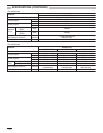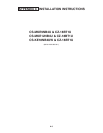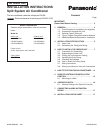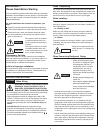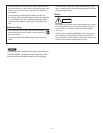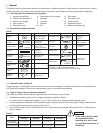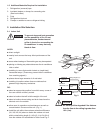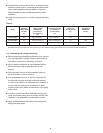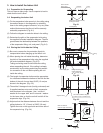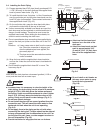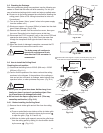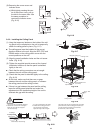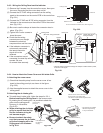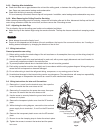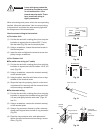
6
install the indoor unit more than 3.3' (1 m) away from any
antenna or power lines or connecting wires used for tele-
vision, radio, telephone, security system, or intercom.
Electrical noise from any of these sources may affect
operation.
install in a sturdy manner to avoid increased operating
noise.
2-2. Embedding the Tubing and Wiring
Before beginning embedding installation work, consult
fully with agencies or offices related to the building’s
foundation, construction, electricity, and water.
Wait to make connections to the embedded portion.
Each connection step is described later in this
manual.
Securely cover the end of the embedded tubing to
prevent intrusion of dirt or moisture.
If an embedded tube is to be left for a long time, fill
the tube with nitrogen and seal both ends securely.
If a tube is left open for an extended time, moisture in
the air inside the tubing may condense into water
droplets, and lead to water contamination of the refrig-
erant circuit.
In order to prevent insulation breakdown and ground
faults, do not allow wiring ends to come in contact with
rainwater, or be subjected to condensation or dew.
Apply sufficient thermal insulation to the refrigerant
tubing and drain pipes.
Table 3
* If total tubing length becomes 150 to 200 ft. (Max.) or 150 to 230 ft. (Max.), charge additional refrigerant (R410A) by 0.22 oz./ft.
No additional charge of compressor oil is necessary. For more detailed charging information, refer to the Technical & Service Manual.
Max. Max. Allowable Total Limit of Limit of Elevation Required Amount
Allowable Tubing Length Total Tubing Length Difference of Additional
Model Tubing Length at Shipment (L1+L2+L3) or (H1, H2, H3, H4) Refrigerant
Per Unit (L1+L2+L3) or (L1+L2+L3+L4) (ft.) (oz./ft.)*
(ft.) (L1+L2+L3+L4) (ft.)
(ft.)
&8.(1%8 /// /// ³
&8.(1%8 //// ////
&8.(1%8 //// ////



